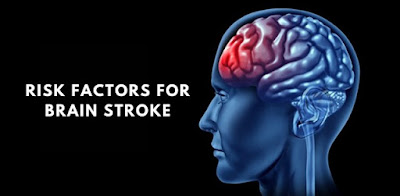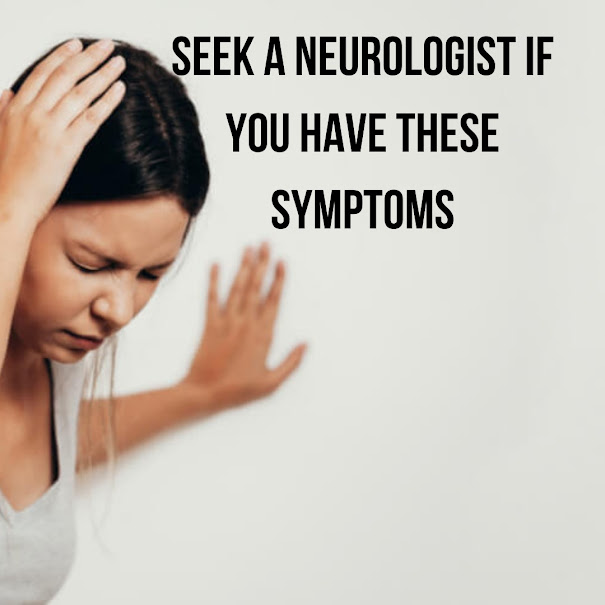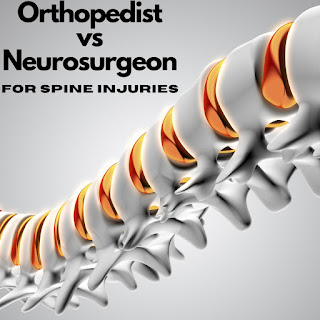Best Doctor for Brain Stroke in Rohini - Risk Factors for Brain Stroke
A Brain stroke occurs when the blood supply to part of your brain is interrupted or reduced or Blocked, meaning that the brain tissue stops receiving oxygen and nutrients. Brain cells begin to die after just a few minutes. When stroke strikes, every minute's delay of treatment counts because millions of brain cells die every minute until blood flow is restored.
A Brain stroke is a medical emergency, and prompt treatment is crucial. Early action can reduce brain damage and other severe internal injuries. According to Indian Stroke Association (ISA), worldwide every year close to 17 million people suffer from strokes, out of which 6.2 million die and 5 million suffer disabilities. It indicates that the incidence of brain strokes is 130 persons out of 1 lakh population in India. The reason for so many cases of brain strokes and disabilities is because of lack of preventive strategies against strokes but Effective treatments can also help prevent disability from stroke.
Causes of Strokes
There are two main causes of brain stroke: leakage or rupture of a blocked artery (ischemic stroke) or blood vessel (hemorrhagic stroke). Some people may have only a temporary disruption of blood flow to the brain, known as transient ischemic attack (TIA), which does not cause permanent symptoms.
Ischemic Stroke - This is known as brain ischemia and cerebral ischemia. This type of stroke is caused by an Blockage/ obstruction in the blood supply artery in the brain. The blockage reduces blood flow and oxygen to the brain, causing damage or death to brain cells.
Hemorrhagic Stroke - A hemorrhagic stroke occurs when blood from an artery begins to bleed into the brain. It occurs when a weak blood vessel ruptures and flows into the surrounding brain. Pressure from leaked blood damages brain cells, and, as a result, the damaged area is unable to function properly.
Symptoms of Strokes
Signs and symptoms of stroke include:
Trouble speaking and understanding what others are speaking - You may experience confusion, reduce your words or have difficulty understanding speech.
Paralysis or numbness of the face, arms or legs - You may develop sudden numbness, weakness or paralysis in your face, arms or legs. It often affects just one side (Right or Left) of your body. Try to raise both your hands above your head at the same time. If one of your arms falls, you may have a stroke. Also, when you try to smile, one side of your mouth may drool.
Problems seeing in eyes (One or Both) - You may suddenly see blurring or blackness in one or both eyes, or you may see double vision.
Headache - Sudden, severe headaches, which may be accompanied by vomiting, dizziness, or altered consciousness, may indicate that you are having a stroke.
Trouble walking - You stumble or lose your balance. you may have sudden dizziness or loss of coordination.
Risk Factors of Strokes by Dr. Shailesh Jain
Dr. Shailesh Jain, best Neurologist in Rohini says Brain stroke related risk factors cannot be controlled. These include gender, age and family history. However, many stroke risk factors are related to lifestyle. Everyone can reduce their risk of having a Brain stroke by making some simple lifestyle changes. Some risk factors are listed below:
High blood pressure
High blood pressure is the most important risk factor for stroke (known as hypertension). Blood pressure refers to the pressure inside the arteries. Normal blood pressure is around 120/80, while high-normal blood pressure is 120/80 to 140/90. High blood pressure occurs when your blood pressure consistently exceeds 140/90. This is called 'hypertension'. High blood pressure means that the blood is increasing more pressure than normal or healthy. Over time, it weakens and damages the blood vessel walls, which can lead to stroke, particularly cerebral haemorrhage.
Hypertension is the most prevalent risk factor for stroke. Hypertension is the main reason to cause thickening of the artery walls, resulting in narrowing and eventual blockage of the vessel (ischaemic stroke). In atherosclerosis, the pressure of your pumping blood could ‘hose off’ debris from damaging the artery walls. The circulating debris (called emboli) can cause a stroke by lodging in and blocking a blood vessel in the brain.
Strategies to reduce high blood pressure include:
Check your blood pressure regularly and know your numbers.
Maintain a healthy weight for your height.
Exercise regularly.
Choose a low-fat, high-fibre diet.
Reduce or eliminate salt from your diet.
Stop smoking.
Take anti-hypertensive medications to help control high blood pressure.
Atherosclerosis and stroke
Atherosclerosis is an inflammatory disease of the arterial walls and is a major cause of stroke. The term 'atherosclerosis' literally means hardening of the arteries. Healthy arteries are flexible and smooth-walled, allowing blood to flow without interruption. The arteries affected by atherosclerosis are hardened, constricted and narrowed by the accumulation of cholesterol-filled 'plaques'.
This plaque destabilizes the lining of the artery and can cause the formation of blood clots within the vessel (atherothromosis). These clots can either block the artery or reduce blood flow and enter into a small vessel (embolism). Either of these events (atherothrombosis or embolism) can lead to ischemic stroke. Atherosclerosis can also weaken the walls of small arteries and result in hemorrhagic stroke.
Treatment for atherosclerosis includes:
appropriate lifestyle changes
Atherosclerosis related medications that reduce the amount of fats circulating in the blood
antiplatelet medications (such as aspirin) or anticoagulant drugs (such as warfarin) to prevent blood clots forming
antihypertensive medications to reduce high blood pressure.
Carotid artery stenosis
Carotid artery stenosis is a contraction in the large arteries located on each side of the neck that carries blood to the head, face, and brain. The narrowing usually results from atherosclerosis, or a build-up of plaque on the inside of the arteries. Over time, stenosis can advance to complete blockage of the arteries.
Most people with carotid stenosis are not aware of the condition unless they have a transient ischemic attack (TIA) or stroke. The TIA is a powerful warning that a full stroke is pending, possibly within hours, days, weeks, or months. In addition to medications to control atherosclerosis, treatment may include surgery to unblock the carotid arteries.
Smoking and stroke
Smokers had an increased risk of overall stroke compared with nonsmokers, Some chemicals in cigarette smoke (such as nicotine and carbon monoxide) accelerate the process of atherosclerosis (narrowing of the arteries). Clotting is more likely to occur because smoking thickens the blood and makes clotting factors, such as platelets, much more 'sticky'. Cigarette smoke forces the arteries to constrict (narrowing), making it difficult for thick blood to move through the vessels.
Strategies to quit smoking include:
Call the Quitline for further advice and support.
See your doctor for information and advice.
Decide on a strategy, such as ‘cold turkey’ or using nicotine replacement therapy.
Keep a smoking diary so that you are aware of your smoking trigger (such as stress or boredom).
Ask your family and friends for support.
Don’t be discouraged by a slip-up. If you smoke a cigarette, put it behind you and keep going.
Diabetes and stroke
Diabetes means you have too much sugar in your blood, and you are more likely to have a stroke. This is because having too much sugar in your blood causes damage to the blood vessels. It can harden blood vessels, and can also cause fatty deposits to form.
Strategies to reduce the effects of diabetes include:
See your doctor regularly for check-ups.
Monitor your blood sugar levels regularly.
Maintain a healthy weight for your height.
Exercise regularly.
Choose a low-fat, high-fibre diet.
If you are on medication, make sure you are taking it correctly.
Cholesterol levels and stroke
Total cholesterol level is associated with risk of hemorrhagic stroke. Higher level of low-density lipoprotein cholesterol seems to be connected with lower risk of hemorrhagic stroke. Cholesterol is a fat-like substance made by the human body. It has many essential roles, but if the level in the blood is too high then it becomes a problem. Blood cholesterol contributes to the formation of a substance called atheroma, which clings to the walls of the artery and leads to atherosclerosis.
Strategies to lower blood cholesterol levels include:
Have your blood cholesterol levels checked regularly by your doctor.
Eat a high-fibre diet.
Reduce your intake of saturated fats (commonly found in animal products).
See your doctor for information and advice. Medications may be recommended.
Alcohol and stroke
Alcohol, and especially alcohol abuse, can significantly impact a person's risk of stroke. In fact, a recent study found that one to two drinks per day can increase the risk of stroke by 10 to 15 percent. Four or more drinks per day increases the risk of stroke by up to 35 percent.
Suggestions include:
Limit your Alcohol consumption
See your doctor for information and referral if you are finding it difficult to limit your alcohol Absorption.
Diet and stroke
Patients at risk of stroke should limit their absorption of animal flesh, avoiding red meat and egg yolk. They should have a high absorption of beneficial oils such as olive and canola, whole grains, vegetables, fruits and legumes.
Exercise and stroke
A sedentary lifestyle (lots of sitting or no body movements) increases the likelihood of obesity, high blood pressure and high blood cholesterol levels. These are all important risk factors for stroke. Suggestions include:
Choose a range of activities you enjoy.
Start your new exercise program slowly and only increase the intensity and duration as you become fitter.
Exercise with a friend or join a team to add a fun social element.
Remember to warm up and cool down.
Contact a physiotherapist or fitness Trainer for advice and information regarding appropriate exercise.
Try to get moderate exercise for at least 30 minutes on (at least) five or four days of the week.
When multiple risk factors are present, the overall risk increases. Your doctor should assess this absolute risk. Employing a tool that calculates your risk of stroke and heart disease based on your age, sex, blood pressure, smoking history, cholesterol levels, and whether you have diabetes. Your doctor will also consider other factors such as if you have atrial fibrillation (Irregular heartbeat) or kidney disease.
Medical Professionals Treating Stroke
A person at high risk of brain stroke will have their condition managed by a team of medical professionals, which may include:
your doctor
neurosurgeon (brain surgeon)
neurologist (brain specialist)
vascular surgeon (surgeon specialising in blood vessels)
cardiologist (heart specialist)
geriatrician (specialist in diseases common in old age)
When to See Doctor
Seek immediate medical attention if you notice any signs or symptoms of stroke, even if they seem to come and go or they disappear altogether. Think as soon as possible and do the following:
Face - Ask to smile and check “Does one side of the face droop?”
Arms - Ask to raise both arms and check “Does one arm drift downward? Or is one arm unable to rise?”
Speech - Ask to repeat a simple phrase and check “Is his or her speech slurred or strange?”
Time - If you observe any of these signs, call your Doctor or emergency medical help immediately.
Do not wait to see if the symptoms have stopped. Every minute matters.The longer a stroke is left untreated, the greater the potential for brain damage and disability. If you are with someone you suspect has a stroke, then watch the person carefully while waiting for emergency help.
About Dr. Shailesh Jain the top Neurosurgeon in Rohini
Dr. Shailesh Jain is the Best Doctor for Brain Stroke in Rohini. He is a principal consultant neurosurgeon and stroke interventionist at Max Hospital Shalimar Bagh and runs his own Arihant Neurospine clinic in Rohini and Pitampura.
You can Book an appointment for any kind of spinal cord Treatment as well as Brain Treatment.




Comments
Post a Comment